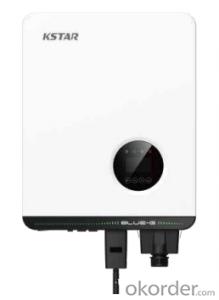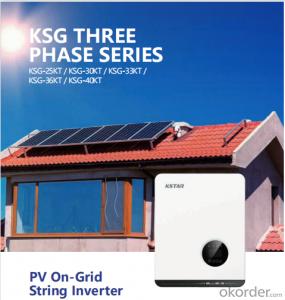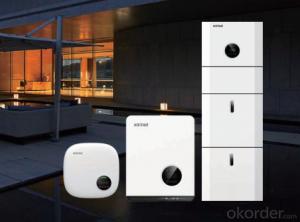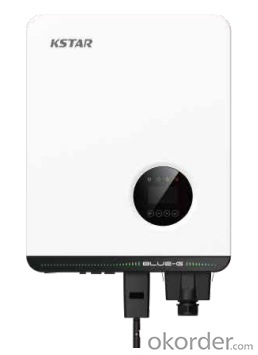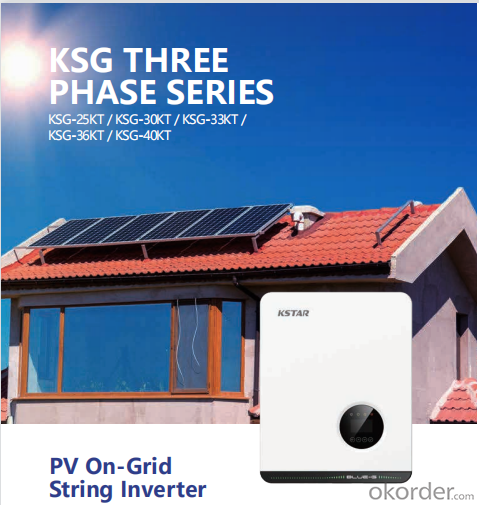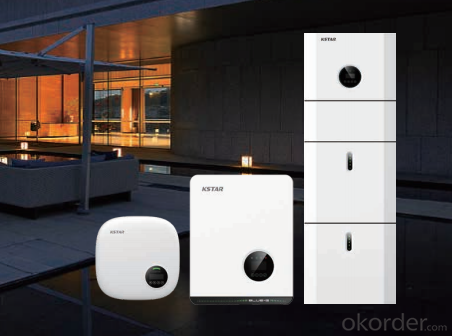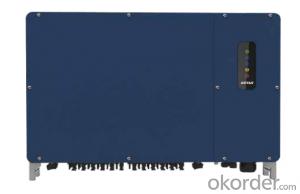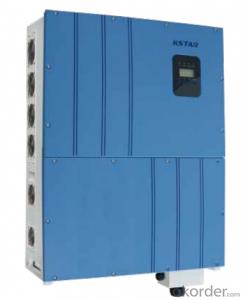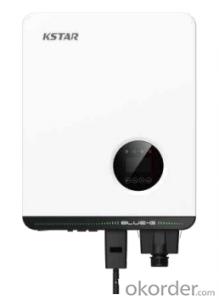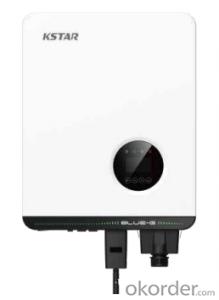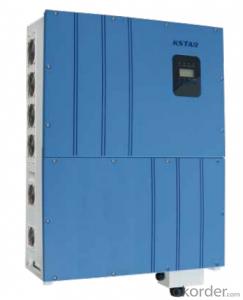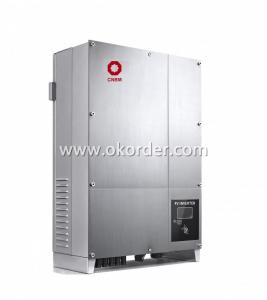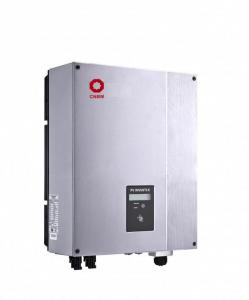Solar Inverter UK PV On-Grid String Inverter KSG-25KT / KSG-30KT / KSG-40KT
- Loading Port:
- China main port
- Payment Terms:
- TT OR LC
- Min Order Qty:
- 50 pc
- Supply Capability:
- 15000 pc/month
OKorder Service Pledge
OKorder Financial Service
You Might Also Like
Specification
Product Description:
★Max. PV voltage up to 1100V Type II DC /AC SPD
★DC/AC ratio up to 1.5 IP66 protection
★High efficiency up to 98.7% Smaller and lighter
★Compatable for big capacity PV panel WiFi / 4G Plug optional
Technical Specifications:
| MODEL | KSG-25KT | KSG-30KT | KSG-40KT |
| Input(DC) | |||
| Max. remonmmended PV power | 37500W | 45000W | 60000W |
| Max. DC Voltage | 1100V | 1100V | 1100V |
| Nominal Voltage | 600V | 370V | 370V |
| Start Voltage | 180V | 180V | 180V |
| MPPT Voltage Range | 200V-1000V | 200V-1000V | 200V-1000V |
| Number of MPP Tracker | 3 | 3 | 3 |
| Strings Per MPP Tracker | 2 | 2 | 2 |
| Max. Input Current Per MPPT | 30A | 30A | 30A |
| Max. Short-circuit current per MPPT | 50A | 50A | 50A |
| Output(AC) | |||
| Nominal AC output power | 25000W | 30000W | 40000W |
| Max. AC output power | 27500VA | 33000VA | 44000VA |
| Nominal AC Voltage | 400V 3L+N | ||
| AC Grid Frequency Range | 50Hz / 60Hz±5Hz | ||
| Max. Output Current (A) | 39.7A | 47.7A | 63.6A |
| Power Factor (cosφ ) | 0.8 leading to 0.8 lagging | ||
| THDi | 3% | ||
| Efficiency | |||
| Max. Efficiency | 98.60% | 98.70% | 98.70% |
| Euro Efficiency | 98.30% | 98.40% | 98.40% |
| Protection devices | |||
| DC Switch | Yes | ||
| Anti-islanding Protection | Yes | ||
| Output Over Current | Yes | ||
| DC Reverse Polarity Protection | Yes | ||
| String Fault Detection | Yes | ||
| AC/DC Surge Protection | Type II | ||
| Insulation Detection | Yes | ||
| AC Short Circuit Protection | Yes | ||
| General Specifications | |||
| Dimensions W x H x D (mm) | 380*483*227 | ||
| Weight(kg) | <35 | ||
| Environment | |||
| Operating Temperature range | –25℃~+60℃ | ||
| Cooling Type | Fan Cooling | ||
| Max. Operation Altitude | 4000m | ||
| Max. Operation Humidity | 0-100%(No Condensation) | ||
| AC Output Terminal Type | Connector | ||
| IP Class | IP66 | ||
| Topology | Transformer-less | ||
| Communication Interface | RS485/WIFI/4G | ||
| Display | LCD | ||
| Certification & Standard | EN/IEC62109-1/2;IEC/EN61000-6-2;IEC/EN61000-6-4; IEC61683;IEC60068;IEC60529;IEC62116;IEC61727;EN50549-1; AS 4777.2;VDE-AR-N-4105;VDE 0126-1-1;CEI0-21; G98;G99;C10/C11;NB/T32004-2018;GB/T19964-2012 | ||
FAQ:
Q:How the output voltage of the PV inverter and the grid-connected voltage are determined
Inverter is the DC power (battery, battery) into alternating current (usually 220V, 50Hz sine wave). It consists of inverter bridge, control logic and filter circuit. Widely used in air conditioning, home theater, electric wheel, power tools, sewing machines, DVD, VCD, computer, TV, washing machine, range hood, refrigerator, video recorders, massage, fan, lighting and so on. In foreign countries
Q:Installation and maintenance of photovoltaic grid - connected inverter
only when the local power sector permission by the professional and technical personnel to complete all the electrical connection before the inverter can be connected.
Q:What is the difference between a PV grid-connected inverter and an off-grid inverter?
Off-grid inverter is equivalent to their own to establish an independent small power grid, mainly to control their own voltage, is a voltage source.
Q:After the PV inverter, how to achieve the same period before the network?
Solar panel simulator: with MPPT function, simulated morning, noon, afternoon, evening, rainy weather, solar panels produced under different conditions in different voltages.
Q:Is the PV inverter a current source or a voltage source?
According to the waveform modulation method can be divided into square wave inverter, stepped wave inverter, sine wave inverter and modular three-phase inverter.
Q:Photovoltaic grid-connected inverter without DC emc how will happen
Solar photovoltaic power generation technology is the use of solar cells, the photovoltaic effect of semiconductor materials, solar radiation can be directly converted into a new type of power generation system, solar energy is a radiant energy, solar power means --- to direct conversion of sunlight Into electricity,
Q:What is the difference between low voltage grid connection and medium voltage grid connection?
For photovoltaic power plants when the power system accidents or disturbances caused by photovoltaic power plant grid voltage drop, in a certain voltage drop range and time interval, the photovoltaic power plant can ensure that non-off-line continuous operation.
Q:Is the grid side of the grid and the inverter?
The grid load side of the grid is the grid. The inverter is an important part of the PV grid-connected system and can not be regarded as an external load. Photovoltaic power generation system is included in both grid and off-grid.
Q:PV grid-connected inverter and independent inverter in the control of what is the difference
The independent inverter in the output voltage phase amplitude of the frequency control is initially set good. Independent inverter, you should refer to off-grid inverter, do not need to consider the grid situation.
Product Images:
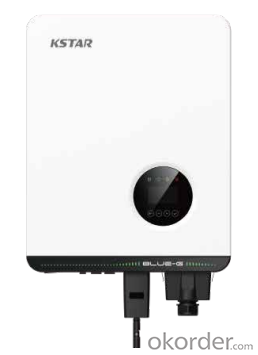
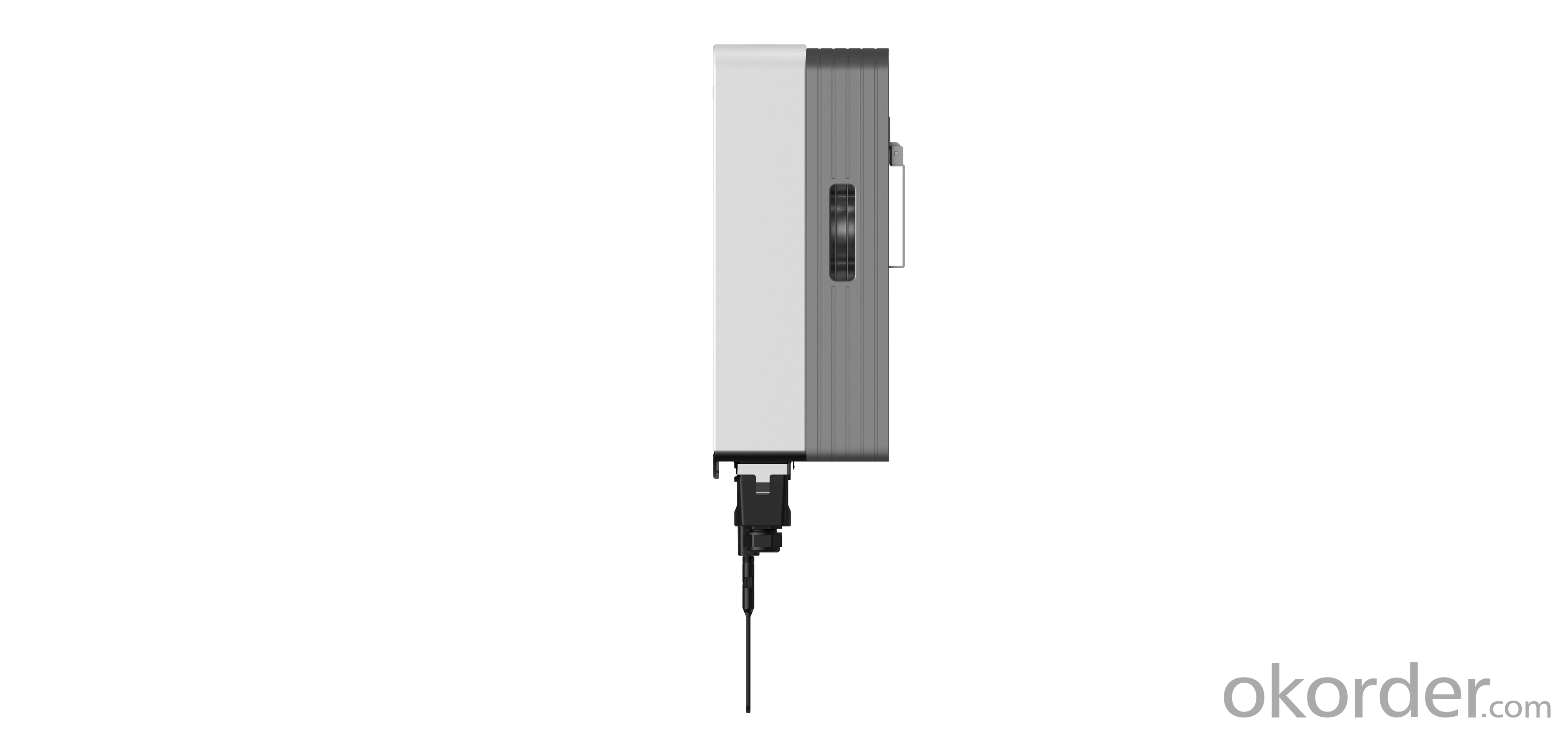
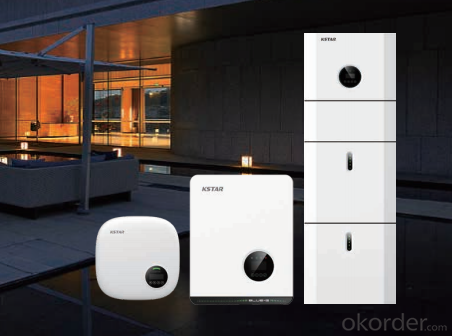
Production Process Photos:
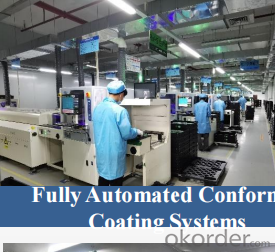
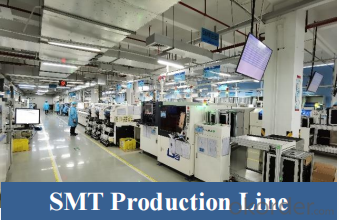
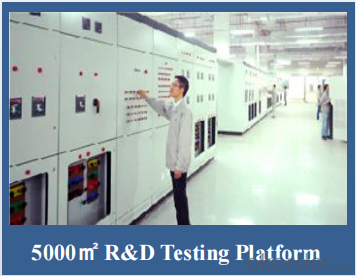
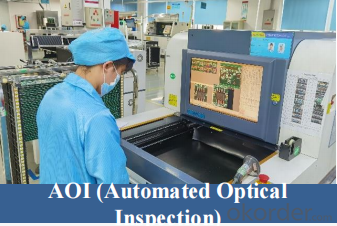
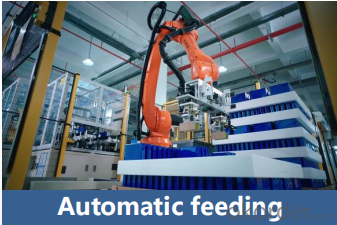
- Q: How does MPPT technology work in solar inverters?
- MPPT (Maximum Power Point Tracking) technology in solar inverters works by continuously adjusting the operating voltage and current of the solar panels to ensure the maximum power output. It does this by constantly monitoring the voltage and current of the solar panels and finding the optimal point (maximum power point) at which the panels can deliver the most power. This is achieved by varying the load on the panels to match their impedance with the maximum power point. MPPT technology maximizes the efficiency of solar power generation by extracting the maximum available power from the panels under varying environmental conditions such as shading, temperature changes, and panel degradation.
- Q: How does the harmonic distortion affect the performance of a solar inverter?
- Harmonic distortion affects the performance of a solar inverter by introducing unwanted frequencies and distortion in the output waveform. This can lead to reduced efficiency, increased power losses, and potential damage to connected electrical devices. It can also cause electromagnetic interference and compatibility issues with the utility grid or other connected systems. Therefore, minimizing harmonic distortion is crucial to ensure optimal performance and reliable operation of a solar inverter.
- Q: How does a solar inverter protect against overvoltage and overcurrent?
- A solar inverter protects against overvoltage by continuously monitoring the voltage level of the solar panels. If the voltage exceeds a safe threshold, the inverter automatically limits the power output or shuts down temporarily to prevent damage to the system. Similarly, to protect against overcurrent, the inverter monitors the current flowing through the system. If the current exceeds a safe limit, the inverter adjusts the output power or shuts down to avoid overheating and potential electrical hazards.
- Q: Can a solar inverter be used with a battery backup system?
- Yes, a solar inverter can be used with a battery backup system. The solar inverter converts the DC power generated by the solar panels into AC power that can be used to power appliances and charge batteries. The battery backup system stores excess solar energy for use during times when the sun is not shining, providing a reliable source of power even when the solar panels are not producing electricity.
- Q: What is the role of a DC-DC converter in a solar inverter?
- The role of a DC-DC converter in a solar inverter is to convert the direct current (DC) generated by the solar panels into the appropriate voltage and current levels required for the inverter to convert it into alternating current (AC) electricity. The DC-DC converter ensures efficient power transfer and enables the solar inverter to maximize the energy harvested from the solar panels. Additionally, it helps regulate the voltage levels and maintain the stability of the solar power system.
- Q: Are there any ongoing maintenance requirements for a solar inverter?
- Yes, there are ongoing maintenance requirements for a solar inverter. Regular cleaning of the solar panels to remove dust and debris is necessary to maintain optimal performance. Additionally, inspections and tests of the inverter's components, such as cables and connections, should be conducted periodically to ensure everything is functioning properly. Monitoring the inverter's performance and addressing any issues promptly is also crucial for long-term maintenance.
- Q: Can a solar inverter be used with a solar-powered telecommunications system?
- Yes, a solar inverter can be used with a solar-powered telecommunications system. A solar inverter is essential in converting the direct current (DC) generated by solar panels into alternating current (AC) required for powering telecommunication equipment. This ensures efficient and reliable operation of the system by enabling the utilization of solar energy to power the telecommunications infrastructure.
- Q: What are the main components of a solar inverter?
- The main components of a solar inverter typically include the DC input, MPPT (Maximum Power Point Tracking) system, inverter circuit, transformer, and AC output.
- Q: Can a solar inverter be installed indoors?
- Yes, a solar inverter can be installed indoors.
- Q: Are there any government incentives available for solar inverters?
- Many countries provide government incentives for solar inverters, aiming to promote renewable energy adoption and reduce carbon emissions. In the United States, for example, one common incentive is the solar investment tax credit (ITC), allowing homeowners and businesses to deduct a portion of their solar installation costs from their federal taxes. Germany, on the other hand, implements feed-in tariffs that require utility companies to pay a premium for electricity generated by solar inverters. Furthermore, local governments may offer grants, rebates, or low-interest loans to facilitate the purchase and installation of solar inverters. To fully grasp the incentives available in your region, it is crucial to consult your local government or relevant authorities.
Send your message to us
Solar Inverter UK PV On-Grid String Inverter KSG-25KT / KSG-30KT / KSG-40KT
- Loading Port:
- China main port
- Payment Terms:
- TT OR LC
- Min Order Qty:
- 50 pc
- Supply Capability:
- 15000 pc/month
OKorder Service Pledge
OKorder Financial Service
Similar products
Hot products
Hot Searches
Related keywords
